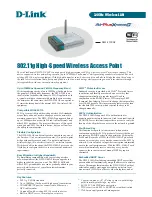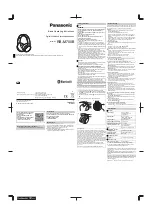
Once the configuration process is complete, the host is able to
communicate on the Internet.
DHCP-server
manages a pool of IP addresses and information about client
configuration parameters such as default gateway, domain name, the
name servers, other servers such as time servers, and so forth. On
receiving a valid request, the server assigns the computer an IP address,
a lease (length of time the allocation is valid), and other IP configuration
parameters, such as the subnet mask and the default gateway.
Depending on implementation, the DHCP server may have three
methods of allocating IP-addresses:
• dynamic allocation: A network administrator assigns a range of IP
addresses to DHCP, and each client computer on the LAN is
configured to request an IP address from the DHCP server during
network initialization. The request-and-grant process uses a lease
concept with a controllable time period, allowing the DHCP server
to reclaim (and then reallocate) IP addresses that are not renewed.
• automatic allocation: The DHCP server permanently a free IP address
to a requesting client from the range defined by the administrator.
This is like dynamic allocation, but the DHCP server keeps a table of
past IP address assignments, so that it can preferentially assign to
a client the same IP address that the client previously had.
• static allocation: The DHCP server allocates an IP address based on
a table with MAC address/IP address pairs, which are manually filled
in (perhaps by a network administrator). Only requesting clients with
a MAC address listed in this table will be allocated an IP address. This
feature (which is not supported by all DHCP servers) is variously
called Static DHCP Assignment (by DD-WRT),fixed-address (by the
dhcpd documentation), Address Reservation (by Netgear), DHCP
reservation or Static DHCP (by Cisco/Linksys), and IP reservation or
MAC/IP binding (by various other router manufacturers).
Diffie-Hellman
is that part of the
protocol used for exchanging the material from
which the symmetrical keys are built. The Diffie-Hellman algorithm
builds an encryption key known as a "shared secret" from the private
key of one party and the public key of the other. Since the
symmetrical keys are derived from this DH key shared between the
peers, at no point are symmetric keys actually exchanged.
DLNA
standard that allows compatible devices to transfer media content
(images, music, videos) over the home network and display it in real
time. This technology is to connect home computers, mobile phones,
notebooks and home electronics in a single digital network.
DLNA-certified devices can be configured and combined in a home
network automatically.
Domain Name System
is a hierarchical distributed naming system for computers, services, or
any resource connected to the Internet or a private network. It
associates various information with domain names assigned to each
of the participating entities. A Domain Name Service resolves queries
for these names into IP addresses for the purpose of locating computer
Command Reference Guide — Keenetic Extra (KN-1710)
324
Glossary
Summary of Contents for EXTRA KN-1710
Page 2: ......
Page 6: ...Command Reference Guide Keenetic Extra KN 1710 6 Contents Overview...
Page 20: ...Command Reference Guide Keenetic Extra KN 1710 20 Chapter 1 Product Overview...
Page 26: ...Command Reference Guide Keenetic Extra KN 1710 26 Chapter 2 Introduction to the CLI...
Page 322: ...Command Reference Guide Keenetic Extra KN 1710 322 Chapter 3 Command Reference...
Page 332: ...Command Reference Guide Keenetic Extra KN 1710 332 Glossary...
Page 348: ...Command Reference Guide Keenetic Extra KN 1710 348 Appendix C SNMP MIB...
















































